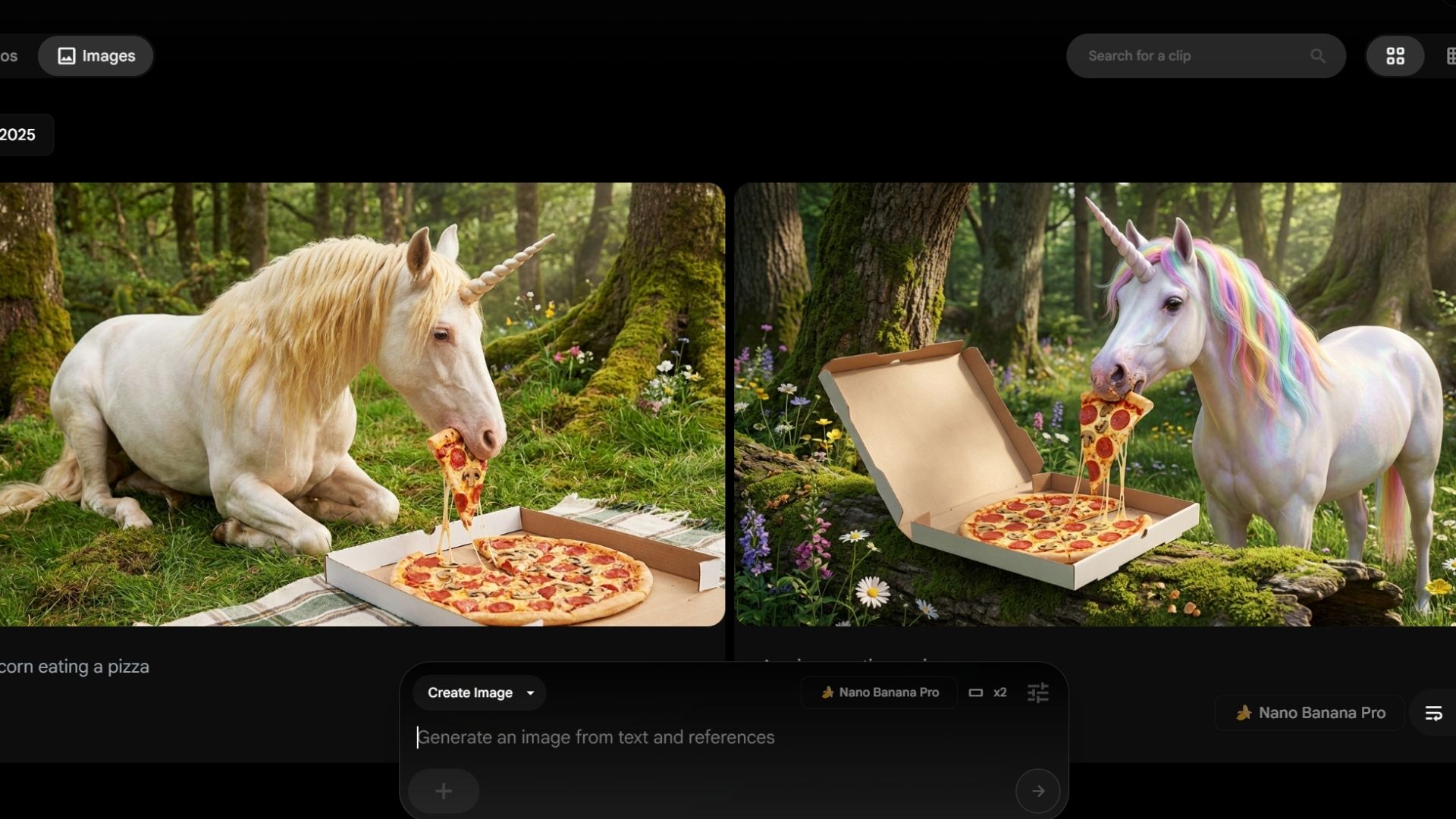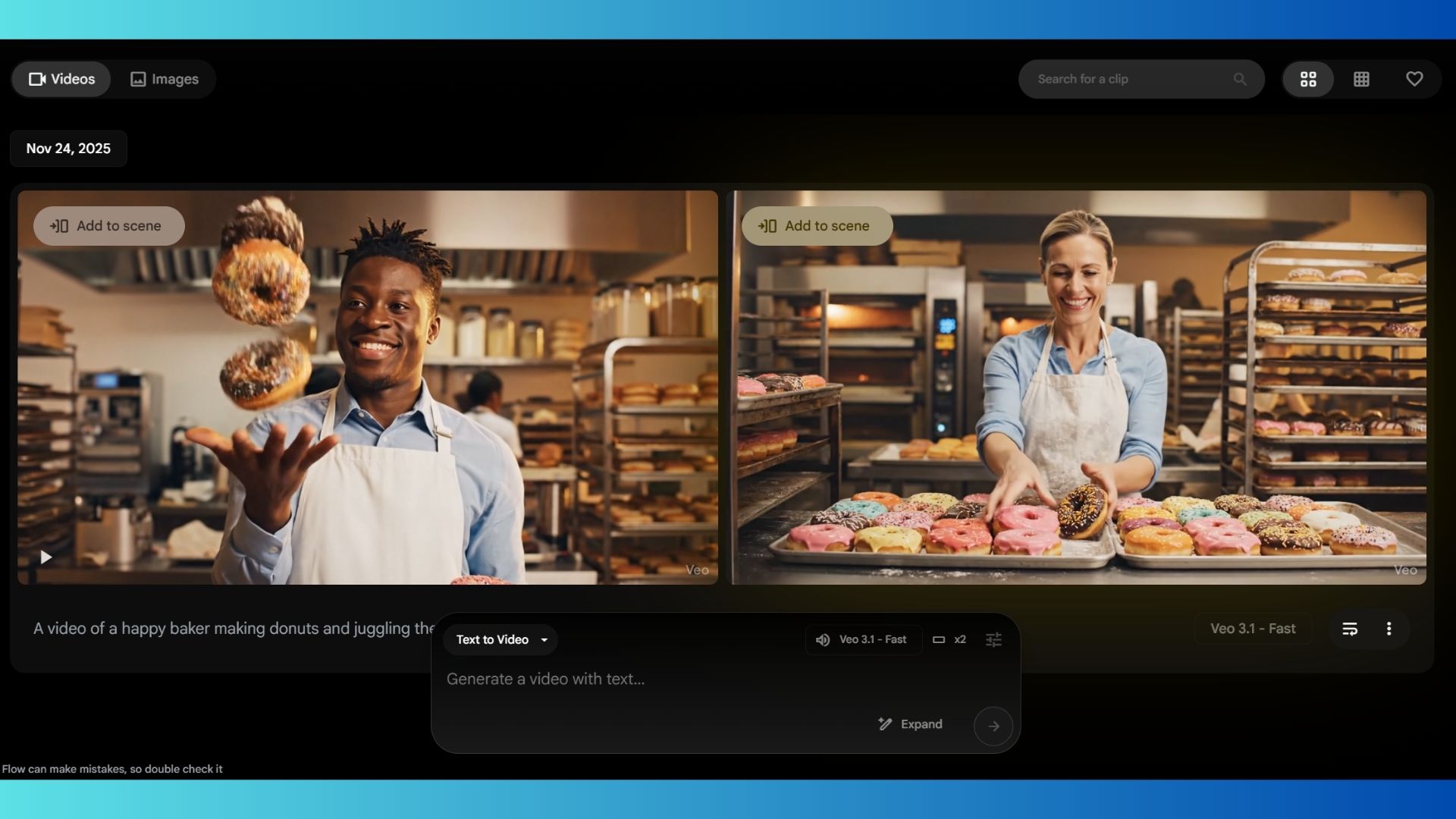I just tried Flow's 4 new AI editing tools — and I can't believe what it can do now

Flow, Google’s AI-powered video creation tool, is getting a major upgrade. The video platform built on top of models like Veo 3.1 , Nano Banana and Imagen, provides creators with workflows, assets, editing controls, scene and story‑layout layers.
Starting today, creators will have access to four new features aimed at giving them more control over how images and video clips look and move, all without needing to start over every time something needs an edit.
Since launching in May, according to Google, users have created more than 500 million videos in Flow, but until now, editing has been somewhat rigid. That’s changing with new updates designed to make your projects look more polished with fewer prompts.
Here's what it can do now:
1. Edit images with Nano Banana (and Nano Banana Pro)

Flow now includes a dedicated Images tab where you can generate and edit photos that become characters, props or backdrops in your video. Free users get access to Google’s Imagen and Nano Banana models, while Pro subscribers can try Nano Banana Pro, the newer and more advanced version. The above images were made with Nano Banana Pro.
The goal with this latest update is to help users avoid the hassle of re-generating a full scene just to tweak a detail like adding rainbow hair to a unicorn.
Free tier and Pro tier can do the following:
- Change outfits or poses
- Adjust lighting or camera angle
- Remove background distractions
- Blend two images together in a single prompt
2. You can prompt with doodles now

This is a game-changer for anyone who doesn't like typing out prompts. Now, Flow lets you draw directly on an image, and the system will interpret your doodles using the Frames to Video feature.
That means you can sketch a hairstyle, shift a pose or drop in accessories, without a detailed prompt needed.
3. Remove or insert objects
Whether you want to delete a lamppost or add a missing soccer ball, Flow now lets you insert or remove objects inside a scene without touching anything else. The feature is still experimental, and it works best when the object isn’t moving much.
Get instant access to breaking news, the hottest reviews, great deals and helpful tips.
This kind of surgical editing is rare in AI video generation, and it signals a shift toward more creator-level control.
4. Reshoot your scene with new camera angles
Flow now supports more camera motion presets — including different perspectives and trajectory styles. That means if you don’t love the way a scene looks, you can reshoot it with a new camera motion instead of starting over.
This update is especially useful for clips that didn’t originally have camera movement baked in.
Why it matters
These tools mark an important shift for Flow — from a fast generation tool to a refinement platform. With added control over visuals, object placement, and camera angles, Google is clearly positioning Flow as a serious competitor in the AI content creation space.
And if you're using Flow to prototype ads, make social clips, or just tell stories, these editing upgrades could be game-changers.

Follow Tom's Guide on Google News and add us as a preferred source to get our up-to-date news, analysis, and reviews in your feeds.
More from Tom's Guide
- Stop sharing your AI subscriptions — 7 reasons why it's a bad idea
- Gemini 3 in Chrome just made AI browsers pointless — even ChatGPT Atlas
- I just tested Gemini 3 vs ChatGPT-5.1 — and one AI crushed the competition

Amanda Caswell is an award-winning journalist, bestselling YA author, and one of today’s leading voices in AI and technology. A celebrated contributor to various news outlets, her sharp insights and relatable storytelling have earned her a loyal readership. Amanda’s work has been recognized with prestigious honors, including outstanding contribution to media.
Known for her ability to bring clarity to even the most complex topics, Amanda seamlessly blends innovation and creativity, inspiring readers to embrace the power of AI and emerging technologies. As a certified prompt engineer, she continues to push the boundaries of how humans and AI can work together.
Beyond her journalism career, Amanda is a long-distance runner and mom of three. She lives in New Jersey.
You must confirm your public display name before commenting
Please logout and then login again, you will then be prompted to enter your display name.











